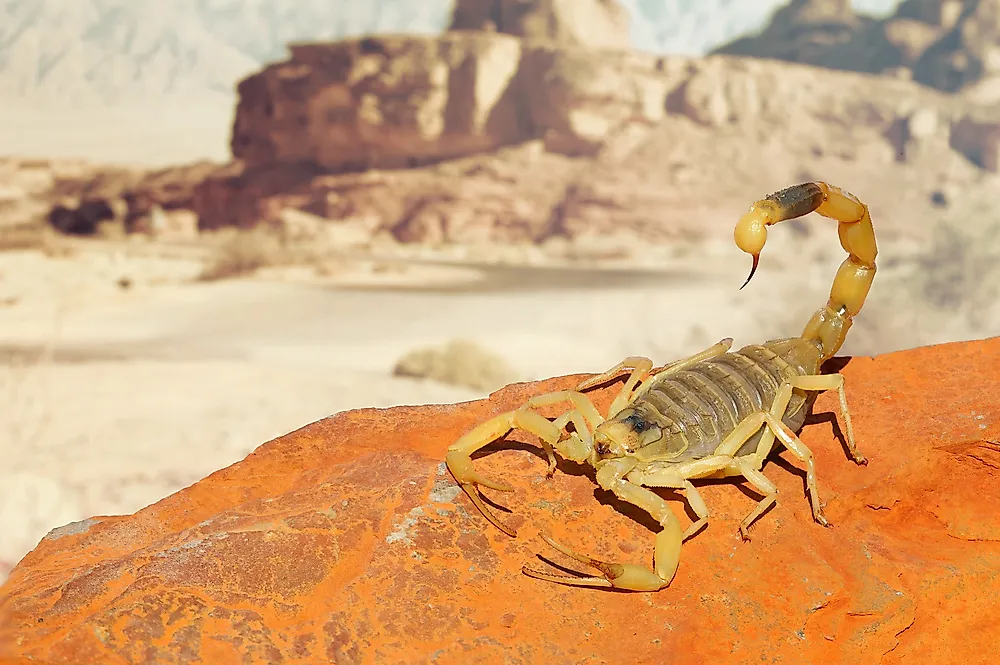The Most Lethal Scorpions Living Today

Venomous Scorpions
Around the world, people share a common fear of being bitten or stung by potentially poisonous animals. The most commonly cited of these fears include snakes, spiders, and scorpions. Scorpions are particularly scary because they inhabit every continent in the world (except Antarctica) and of the roughly 1,750 scorpion species, every single one is venomous. A scorpion’s venom is located in the stinger at the tip of its tail. Scorpion stings can be particularly painful, although only about 25 species are poisonous enough to kill a human. The most harmful stings come from species living in Asia, South America, and Africa.
The Indian Red Scorpion
One species in particular known to be the most lethal scorpion in the world is the Indian Red Scorpion. This deadly scorpion can be found throughout India, eastern Nepal, eastern Pakistan, and Sri Lanka. They are between 2 and 3.5 inches in length and have a dark orangish to bright reddish-brown color, although some are brown or dark grey in color. The Indian Red Scorpion prefers subtropical to tropical lowland habitats, across orchards, plantations, croplands, and scrublands.
This species, like all scorpions, is nocturnal. The majority of the reports of interactions between the Indian Red Scorpion and humans have occurred at night or in the early morning. Most of these incidents involve the scorpion falling from the ceiling onto humans or crawling into an occupied bed at night.
What Happens After an Indian Red Scorpion Sting?
Indian Red Scorpion stings have caused death in between 8 and 40% of all recorded cases. Once stung, common symptoms include sweating, nausea, vomiting, heart problems, discoloration of the skin, and severe pain. In more serious cases, a pulmonary edema may occur, which is a buildup of fluid in the lungs. This symptom may result in shortness of breath and even death. While a scorpion anti-venom is not very effective at treating an Indian red scorpion sting, researchers have discovered that the hypertension drug Prazosin reduces the risk of death to below 4%.
Other Toxic Scorpions
The Deathstalker Scorpion lives up to its name as one of the world’s most lethal scorpions. This species, found in the deserts and scrublands of North Africa and the Middle East, is highly aggressive. They grow between 1.2 and 3 inches in length and can be recognized by their yellow color and darker, almost greenish body. Depending on where they live, they may be a yellowish orange or dark yellow color. A sting from one of these scorpions can result in excruciating pain, increased blood pressure and heart rate, muscle convulsions, and even comas. Death is not likely to occur in healthy adults.
Another lethal scorpion is the Arabian Fat-Tailed Scorpion, which also lives throughout North Africa and the Middle East. It commonly inhabits old, abandoned buildings and was considered a threat to soldiers during the Persian Gulf War. This species is usually a blackish-brown to black color, although some have been recorded as reddish-brown in appearance. The Arabian Fat-Tailed Scorpion is larger than the others mentioned and can grow to over 3.9 inches in length. A sting from this scorpion may cause increased blood pressure, seizures, and unconsciousness.











